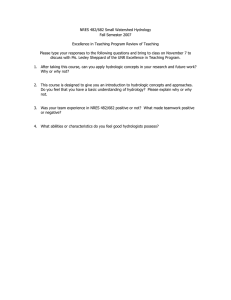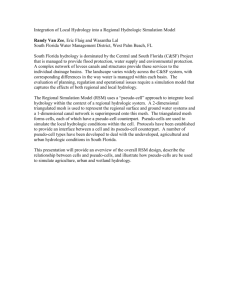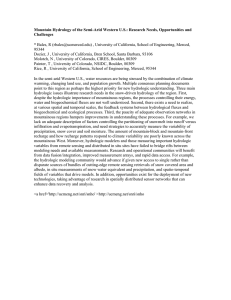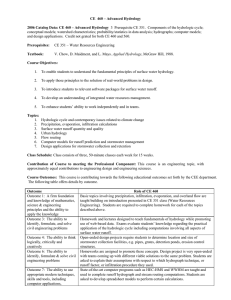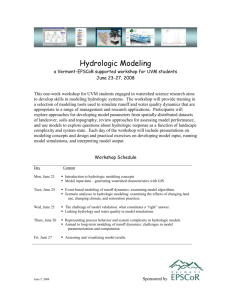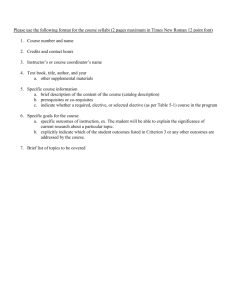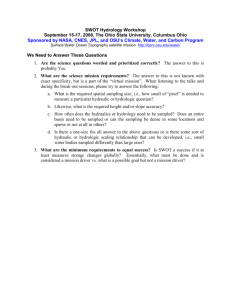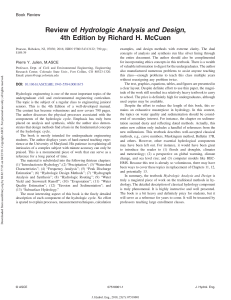Course Information Course title Hydrology Semester 101
advertisement
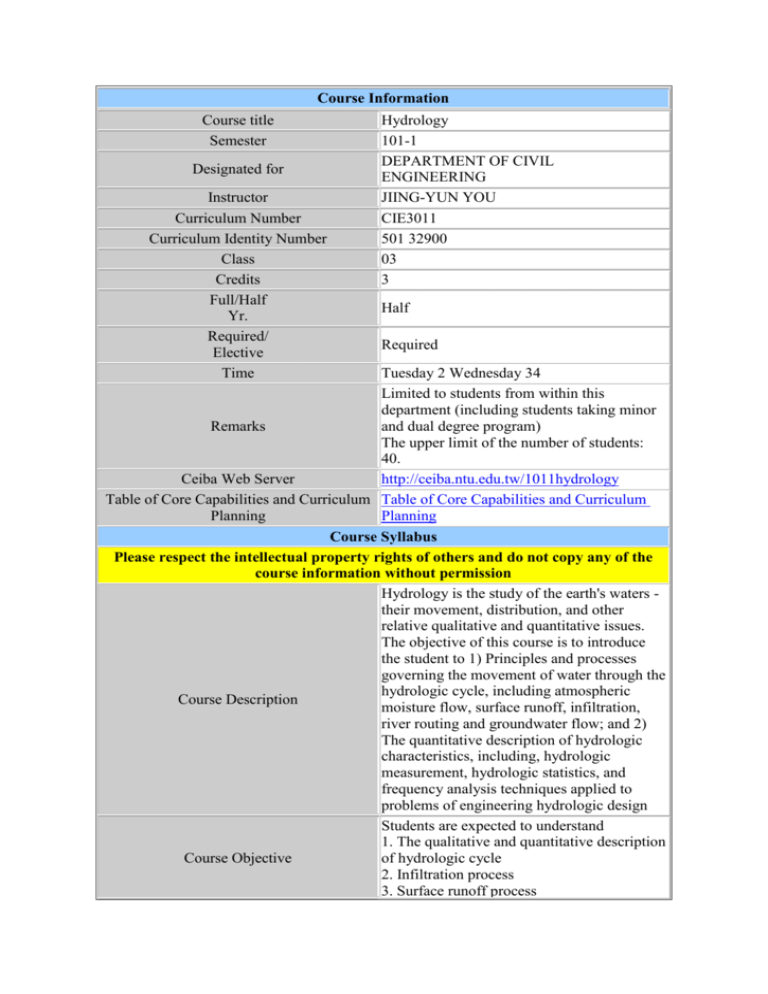
Course Information Course title Semester Designated for Instructor Curriculum Number Curriculum Identity Number Class Credits Full/Half Yr. Required/ Elective Time Hydrology 101-1 DEPARTMENT OF CIVIL ENGINEERING JIING-YUN YOU CIE3011 501 32900 03 3 Half Required Tuesday 2 Wednesday 34 Limited to students from within this department (including students taking minor Remarks and dual degree program) The upper limit of the number of students: 40. Ceiba Web Server http://ceiba.ntu.edu.tw/1011hydrology Table of Core Capabilities and Curriculum Table of Core Capabilities and Curriculum Planning Planning Course Syllabus Please respect the intellectual property rights of others and do not copy any of the course information without permission Hydrology is the study of the earth's waters their movement, distribution, and other relative qualitative and quantitative issues. The objective of this course is to introduce the student to 1) Principles and processes governing the movement of water through the hydrologic cycle, including atmospheric Course Description moisture flow, surface runoff, infiltration, river routing and groundwater flow; and 2) The quantitative description of hydrologic characteristics, including, hydrologic measurement, hydrologic statistics, and frequency analysis techniques applied to problems of engineering hydrologic design Students are expected to understand 1. The qualitative and quantitative description Course Objective of hydrologic cycle 2. Infiltration process 3. Surface runoff process 4. Watershed precipitation runoff process 5. Channel routing 6. Introduction of groundwater 7. Hydrologic statistic and frequency analysis Course Requirement Office Hours References Designated reading 4~5 assignments will be assigned in lecture and will typically be due the next week. For these assignments, you should work together in a group. Each group can have 3 members. In the end of the semester, group member will have an opportunity to evaluate the other members of the group Every Tuesday 14:00~17:00 1. Bedient, P.B., Huber, W.C., 2008. Hydrology and Floodplain Analysis. 2. W. Viessman, Jr., J. Knapp, and G.L. Lewis. 1998, Introduction to Hydrology. Harper & Row, Publishers, Inc., New York, New York, 4th edition. 3. Bras, R. L. 1990Hydrology: an Introduction to Hydrologic Science: AddisonWesley 4. 謝平城,1996,水文學, 曉園出版社。 5. 楊其錚、李光敦, 2008, 水文學精選 200 題, Chow, Maidment and Mays, 1988 ”Applied Hydrology”, McGraw-Hill, Grading Progress Week Date Topic Week 1 9/11,9/12 Class Announcement; Ch1. Introduction Week 2 9/18,9/19 Ch 3.2 Water Vapor/ Humidity. Ch 3.3Precipitation. Week 3 9/25,9/26 Ch 3.3Precipitation
